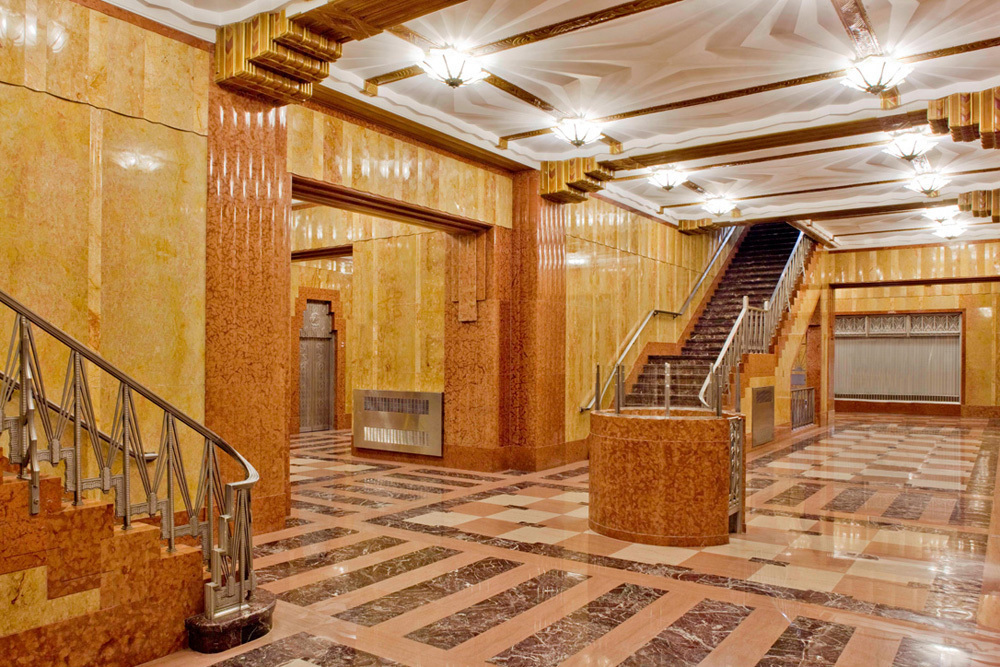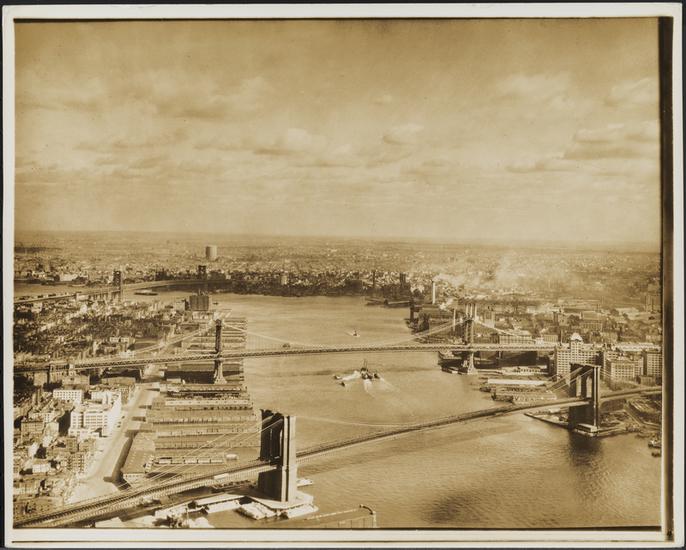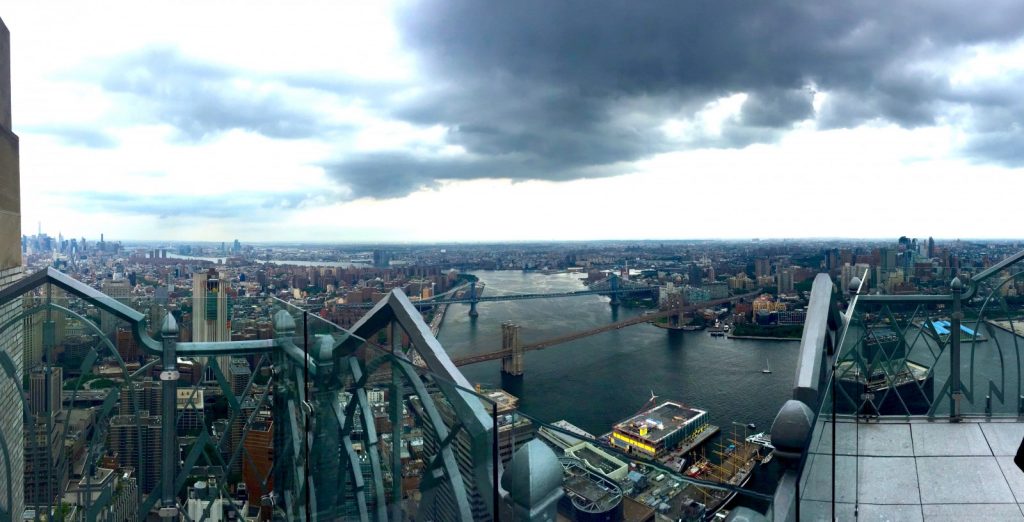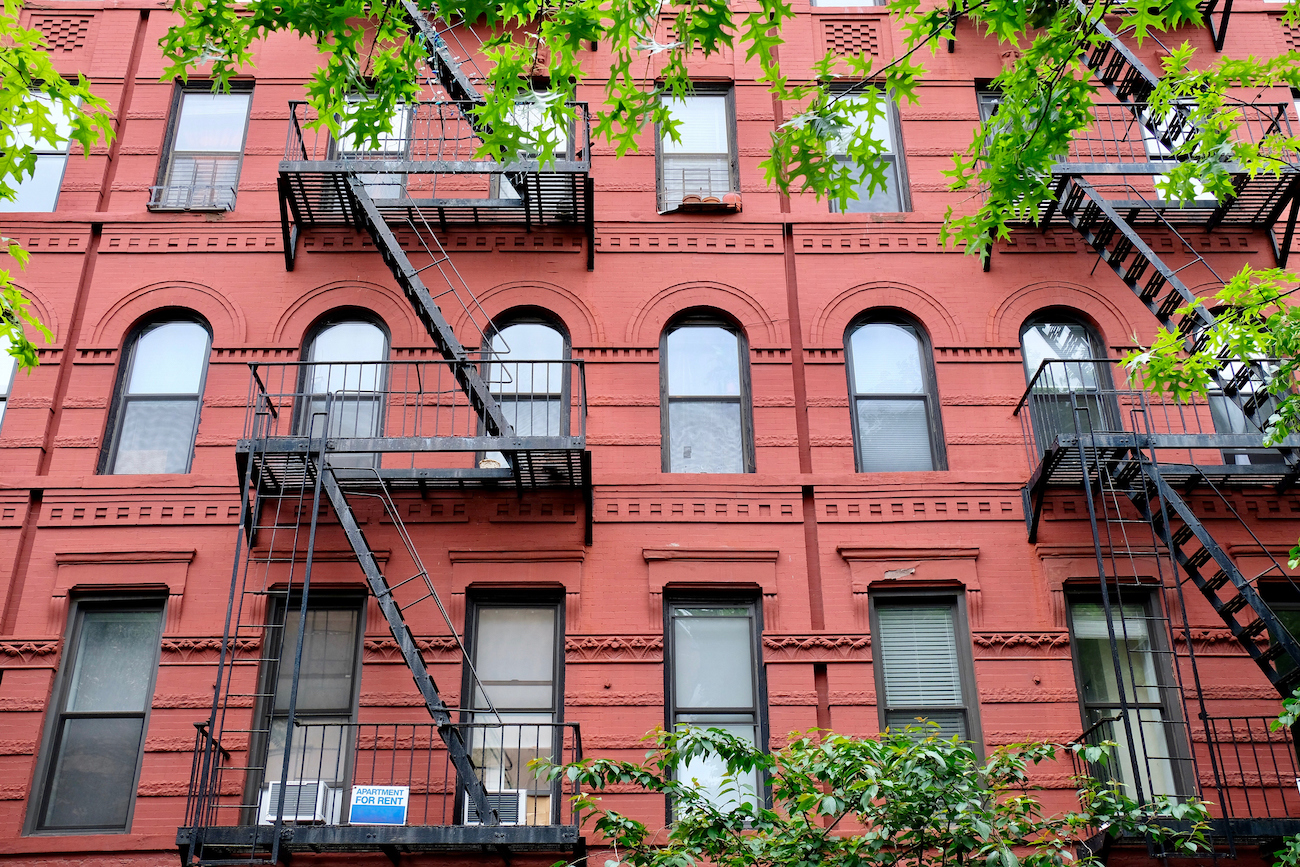While the Empire State Building and Chrysler Building are emblematic of NYC’s art deco style that dotted the skyline in the 1930s, there’s one other building in the same class that has failed to be mentioned in the same sentence. Perhaps it’s because its fantastic views have been closed to the public for over 70 years. Regardless, one thing is clear: It could gain equal popularity among tourists and native New Yorkers alike once it fully completes its conversion this fall.
In case you missed the news, 70 Pine Street is nearing completion of a residential conversion and will soon be home to 611 residential units –150 of which have private outdoor space. Encompassing over one million square feet of space, the building has 400 different floor plans. Currently, floors seven through 20 are ready and available for immediate move-in while floors 36 through 42 will be available for mid-September move-in. All residences should be open to leasing by late fall.
History of 70 Pine
When 70 Pine topped out in 1932, it was the third tallest building in the world, after the Empire State Building and the Chrysler Building. And, surprisingly, at 952 feet, it was the tallest building in Lower Manhattan until the World Trade Center was completed in 1973.
But the Great Depression took a toll on development in NYC and thus the end of the flourishing art deco skyscraper era. Though the lower Manhattan skyline was transformed by these high-rise office buildings in the years following World War I, downtown Manhattan didn’t see a new skyscraper for almost 30 years after 70 Pine’s construction.
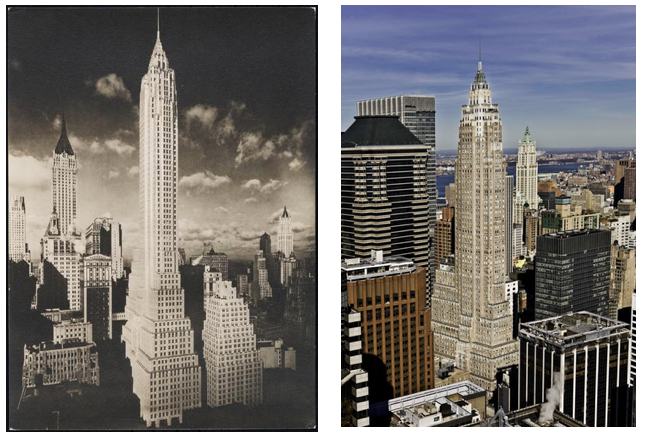
Left: 70 Pine Street, 1935. Source: Museum of the City of New York.
Right: 70 Pine Street, 2016.
70 Pine was originally created to serve as the headquarters for the Cities Service Company, one of the largest corporations in the U.S. at the time. The uppermost floor’s all-glass atrium was converted to a public observation gallery where, for 40 cents, you could enjoy spectacular views of the New York Harbor. This was significantly cheaper than the Empire State Building’s $1.10 charge, and the Cities Service Building’s observation deck remained accessible to the public until 1939.
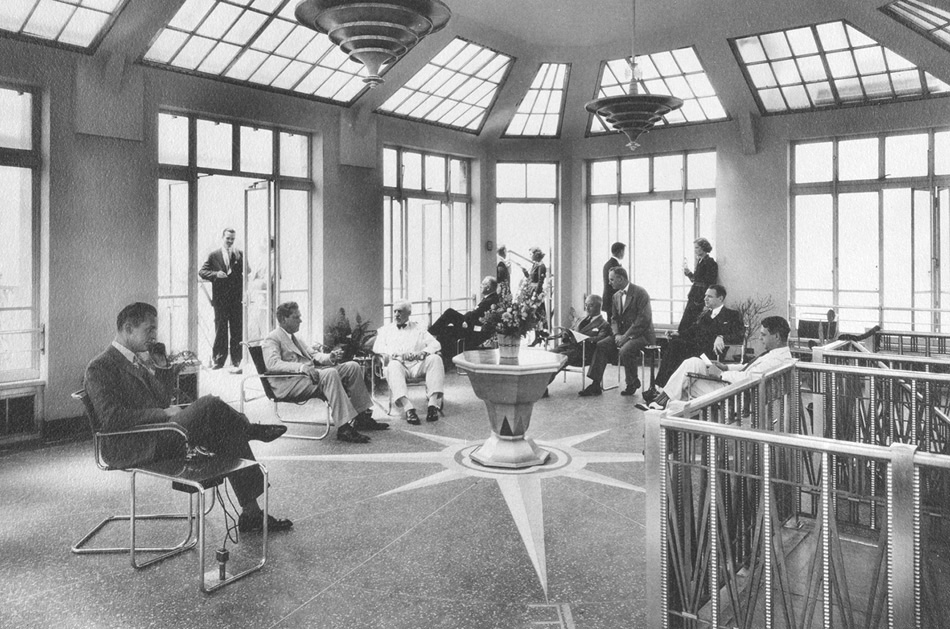
The interior of the Cities Service Building observatory, 1932.
Source: Museum of the City of New York
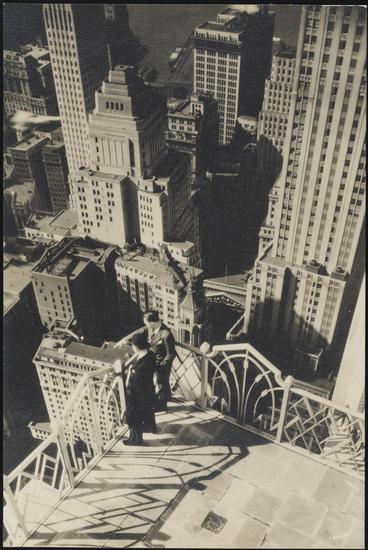
View from the Cities Service Building observatory in 1932.
Source: Museum of the City of New York
During this time, the building had an all-female division of elevator operators. Legendarily, the women were all redheads — and those recruited during the Depression were said to be mainly unemployed showgirls.
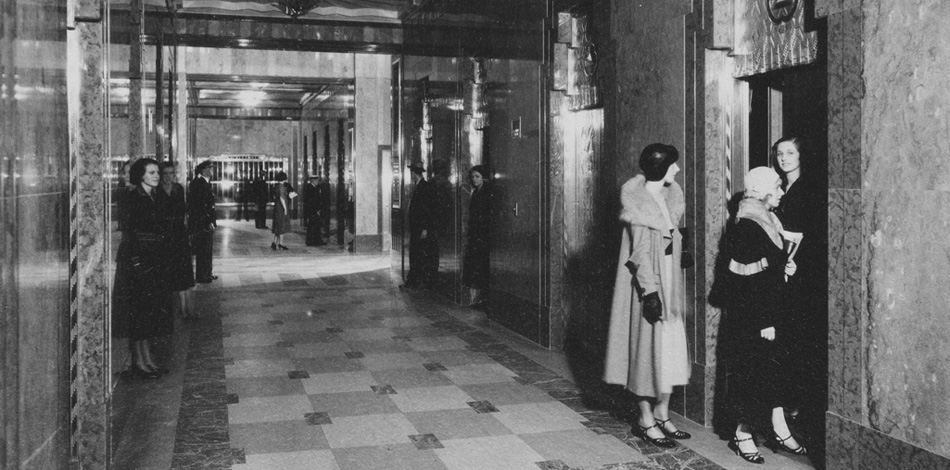
Cities Service Building elevators, 1932.
Source: Museum of the City of New York
Cities Service Company became CITGO in 1965 and moved its headquarters out of New York City in 1973. Three years later, American International Group (AIG) moved into the building and was headquartered there until the economic collapse of 2008. In 2011, the building was given landmark status, helping to preserve its art deco facade and marble lobby.
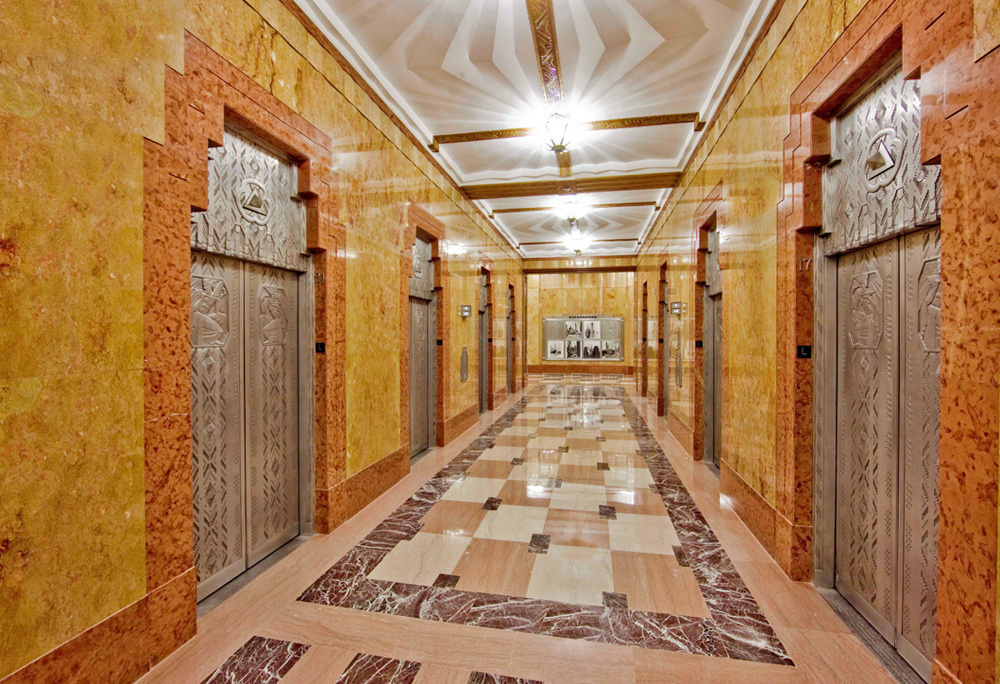
At the time it was built in 1932, 70 Pine Street was home to the city’s first double-decker elevators.
View from the top of 70 Pine, 1933.
Source: Museum of the City of New York
The building’s unique view of the New York Harbor will soon be open to the public once again; developer Rose Associates has plans for a restaurant located on the top floor of the building, completion date TBD.
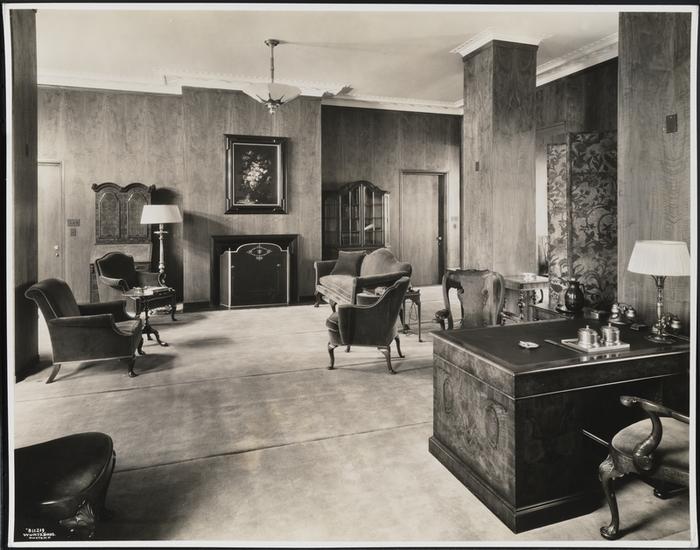
The office of Cities Service’s CEO, 1932.
Source: Museum of the City of New York
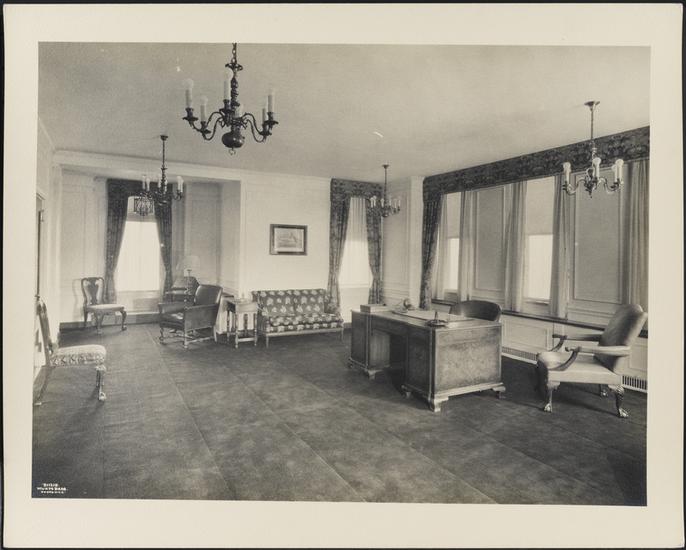
An office on the 55th floor, 1932.
Source: Museum of the City of New York
Though some landmark aspects of the interiors have been preserved — such as its wide hallways — most of the building’s interior has been completely transformed from office space into residential units.
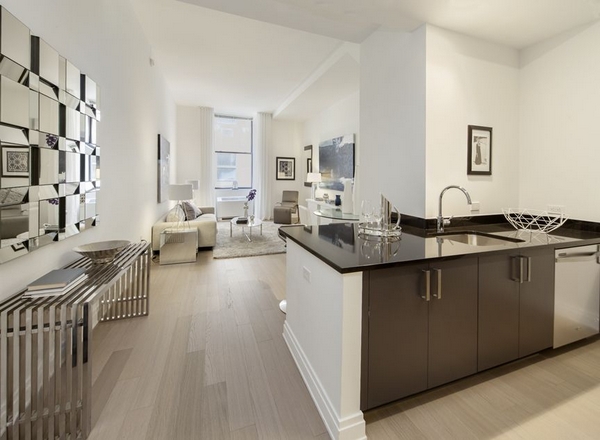
This $3,330/month studio is available for immediate occupancy.
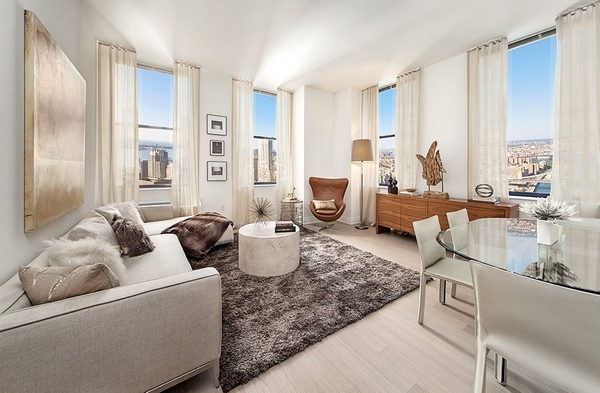
A one-bedroom at 70 Pine, priced at $4,246/month, is available for Sept. 15 move-in.
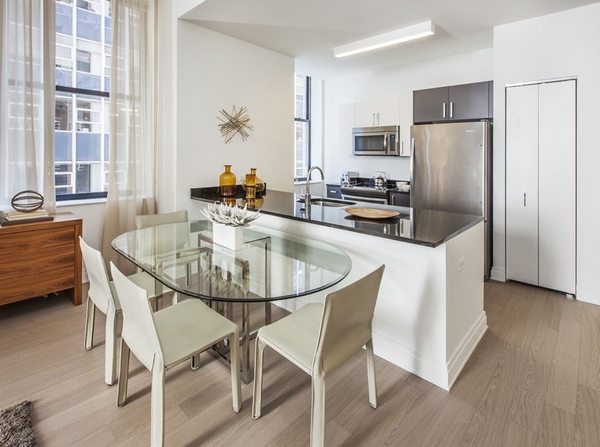
The kitchen in a three-bedroom unit at 70 Pine, available now for $7,886/month.
Related:

